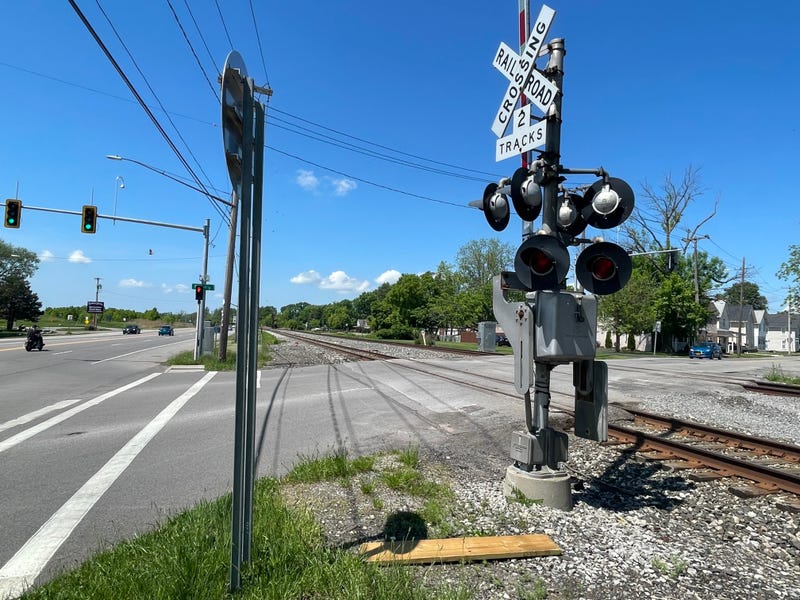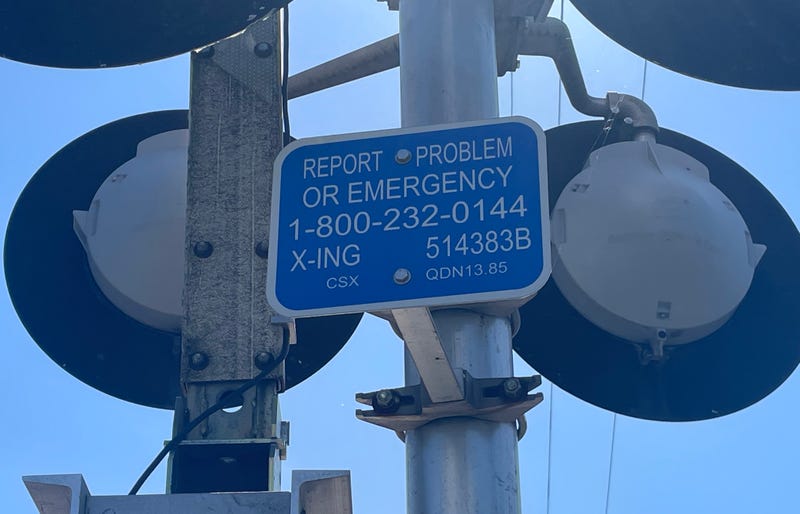
North Tonawanda, N.Y. (WBEN) - It has been nearly four weeks since the North Tonawanda community was stunned with the tragic death of three people after the truck they were riding in was struck by an Amtrak train at the railroad crossing on Felton Street. Among the casualties included a 6-year-old boy.
In the several days following the tragic accident, officials in North Tonawanda have been in contact with other officials from CSX, the New York State Department of Transportation (DOT) and the Federal Railroad Administration (FRA) to discuss how there can be an increase in safety along railways in the city, as well as an increase in public awareness of railroad crossings. This included a recent meeting at City Hall to have some internal discussions on the matter at hand.
"The tragedy happened a few weeks ago, and I wouldn't say necessarily the dust has completely settled by any means, but we thought it'd be best to get all different parties, agencies together in a room," said North Tonawanda Mayor Austin Tylec in an interview with WBEN. "'How do we move forward? What improvements can we make? How are we addressing this? What kind of public awareness campaign can we work on?' That was really the the big synopsis of it."
Tylec says the FRA is willing to work with the State DOT, the city and CSX to evaluate the rails and a lot of railroad intersections in North Tonawanda, especially along River Road.
"The idea behind it is similar to any study. Sort of a diagnostic of what are some improvements we can make here, whatever they'd be. If it's lighting, if it's something to do with gates, timing, signage. Is it closing one of those intersections off? That's just like any project, how do we make it safer? There's always room for improvement, and what's really big with this is we have all these major parties coming together to make sure that something like this doesn't happen again," Tylec said.
As part of his recent newsletter sent to city residents, Mayor Tylec says CSX representatives have told city officials, including police chief Keith Glass, they will be doing maintenance work at many of the railroad intersections in the upcoming months.
"CSX did send us a list of different intersections throughout our city that they're going to be addressing over the summer, and some of it's really just general maintenance," Tylec detailed. "Is it pavement? Is it the rails itself that they're just repairing? Is it lighting is it signage, and so on and so forth. We were happy to see them kind of reach out to us and say, 'Listen, we want to keep you posted. We want you to let the public know we're going to have some closures from when we are able to do these maintenance repairs.' We don't know exactly those dates ye, but they just gave us a heads up, first off."
Tylec adds North Tonawanda can't touch any of the rails or the signage, as that's up to CSX to maintain with it being their property. However, CSX does follow all state or federal guidelines for how intersections have to function.
In a recent conversation with WBEN, Tylec had said the communication between the city and CSX is not as prompt as officials would like it to be, especially in light of an incident such as this. However, Tylec says that needed open line of communication with CSX has finally come.
"One of their governmental relation reps did happen to reach out, a very nice gentleman, and it's really the start of a relationship between our municipality and others, in some cases," he said. "But just to have that connection there and work on things together, and just to have an open line of communication. It's not finger pointing, by any means. We're really just trying to find any types of solutions or safety enhancements."
Another aspect of Tylec's newsletter to residents on railway safety was the fact he's received a number of concerns or possible solutions to enhance certain measures from local residents. Tylec and Chief Glass have been reviewing a number of suggestions and concerns coming through emails or calls to City Hall.
"We like to be informed about items like this, any items, and we don't know what the exact solution is in some of these scenarios. We can't right off the bat make these suggestions real, but we did compile them, we did have those discussions during the meeting," Tylec said. "That's part of this diagnostic, this study is, 'OK, maybe we take some of those aspects into consideration.' And there's experts with the state, federal levels, CSX that knows how these intersections and railways need to function. We are, in this scenario, a partner, an ear, someone that can go back to the public and communicate these things in a very concise way."
Where things go from here, Tylec feels there needs to be a bigger effort of public awareness around local railways.
"There are incidences that may happen throughout the nation, really, and it's always good to educate ourselves on what do we do. If we ever were to stall out on an intersection, what do you do?," Tylec said. "You get out of the car, you call one of these hotlines that are posted at each of these intersections. I would tell everyone, take a look, look for the signage. When you're going over these intersections, I believe it's a little blue sign there, and it has a hotline. So even if you're not experiencing something directly, or you have a concern about maybe an arm went down, no train went by or something, call that hotline, let them know. It goes on their radar, they check it out."

On top of keeping the hotline number in mind at railway intersections, Tylec adds that people should be a bit more vigilant when approaching railroad crossings.
"We don't have to be afraid of the intersections, but it's just being conscious of our awareness, driving safe and being courteous around other people that are driving too. Keep that space between you if you're crossing these intersections. You never know if someone's just going to stop," Tylec said.
"Everyone should be a little bit more conscientious when dealing with the railways."

